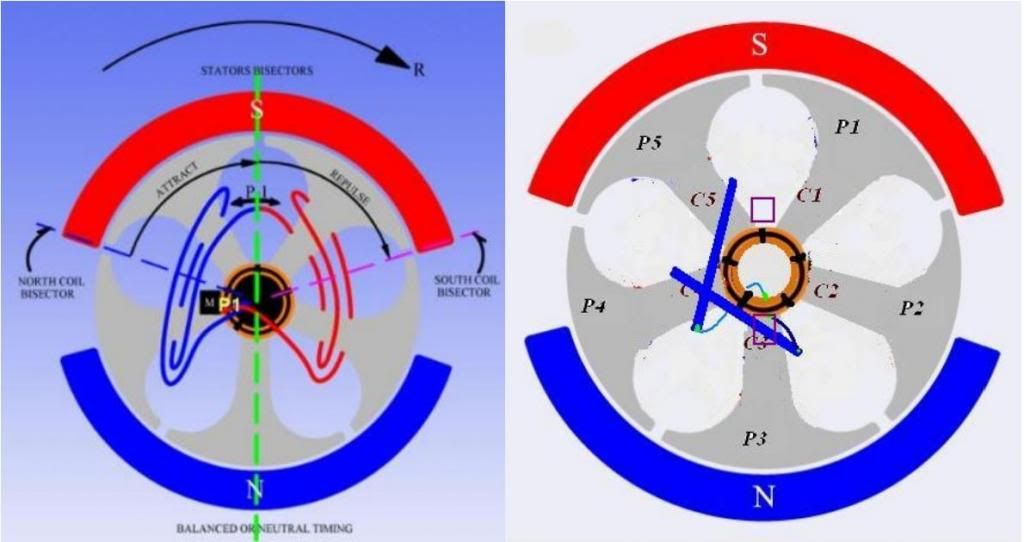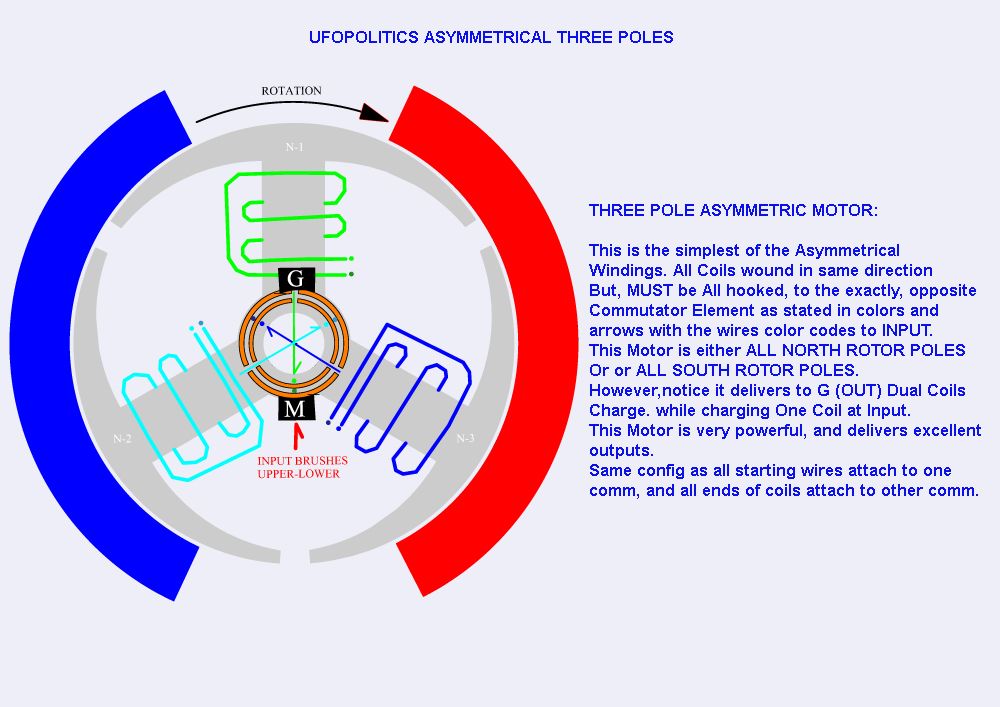Originally posted by sampojo
View Post
My design is the Singular Coil that is the same size as the magnet or a little bigger than the magnet... (NOT a one pole coil, like AN3)...
One pole coil is only for the 3pole motor/no choice .
AN2, my design, the coil was the same size as the magnet. The singular coils covered two poles per coil.
Keep it Clean and Green

Midaz
From the original image below, the singular coils are the same size as the magnet On repulsion mode... Highest TORQUE with high RPMs












Comment